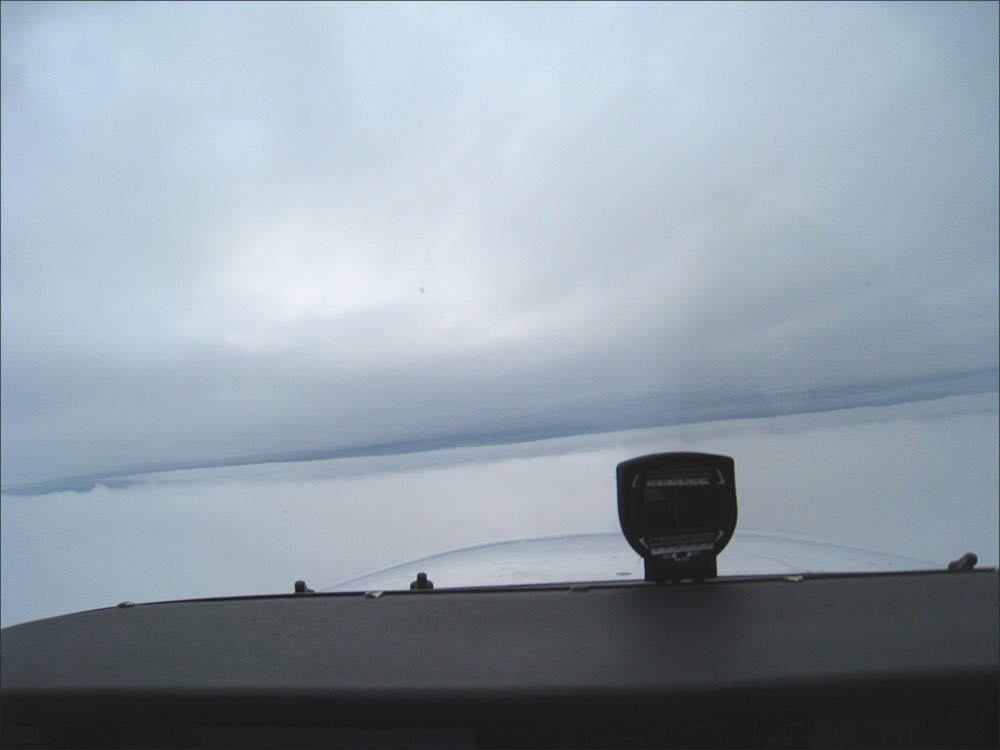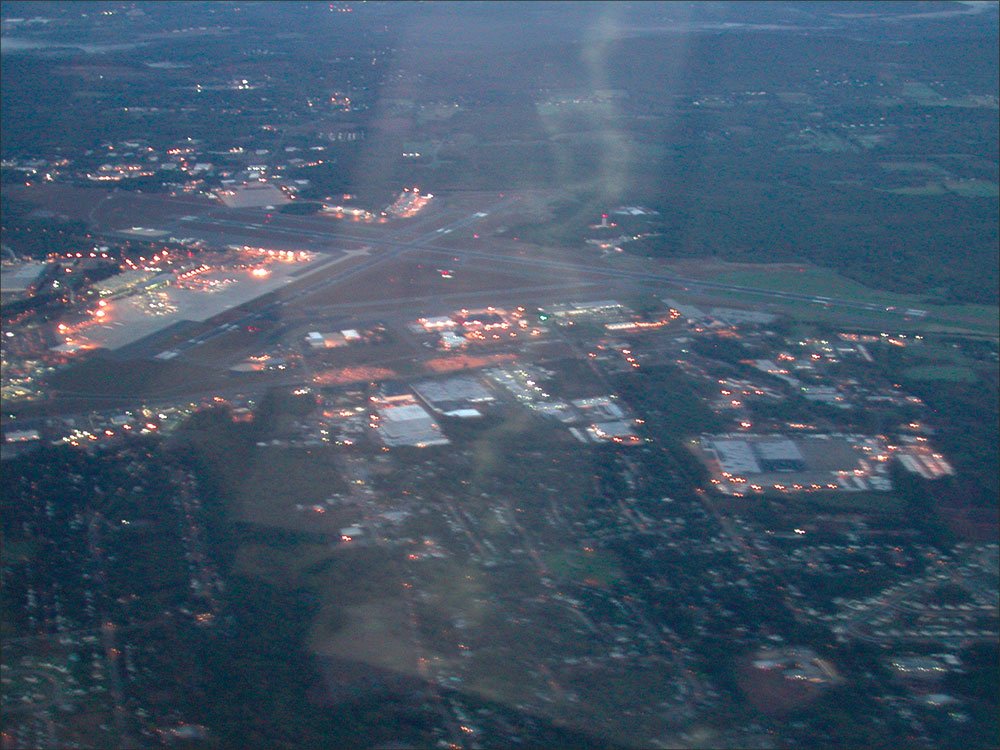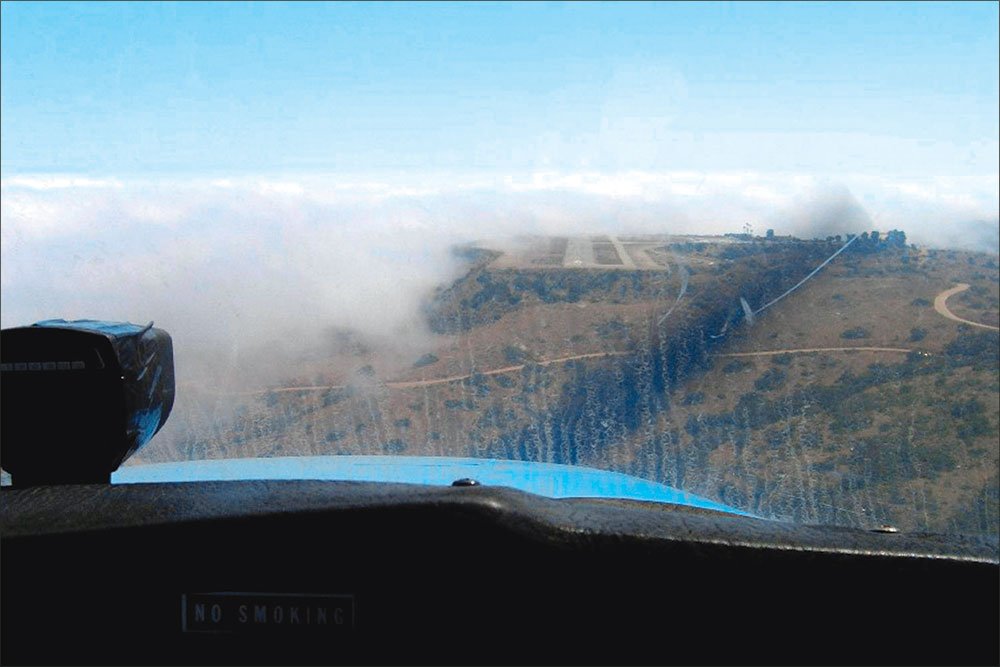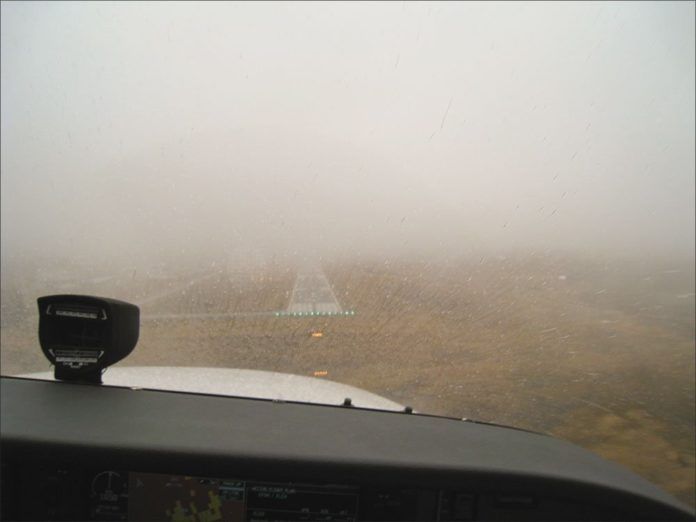Visual illusions can be a factor in any weather, but the low or changing visibility of instrument flying offers specific—and potentially deadly—visual challenges.

What’s the worst that should happen if that wide runway seems further away? Well, you could end up too high and go around or you could simply land long, risking an overrun. Embarrassing, to be sure, possibly with expensive damage, but seldom much worse than that.
However, in IMC there are situations where our view of the world is misleading enough that mistakes can be fatal. To discuss some of the visually challenging or misleading situations that an instrument pilot might encounter, let’s take a short hop together in IMC.
Just IMC
Say you’ve taken the kids to visit grandma in her new digs for the first time. You’ve never been to her local airport before your arrival last Thursday. It’s time to leave and the ASOS is reporting 400- . You do a routine risk assessment and decide it’s safe enough, so you hop in and prepare to go.
As you try to find your way to the runway, you’re reminded how challenging it is to navigate an unfamiliar airport in restricted visibility. Fortunately, you’ve got the airport diagram and you tick off your progress as you work your way to the runway. You remark to yourself that it’s difficult enough at home in day-VMC, but when you can’t see what you don’t know, it’s much harder. Go slow. Pay attention. You’ll make it to the runway.
You get your release, throw all the right switches and take the runway. Your home ‘drome has a broad, 150-foot-wide runway. You casually taxi onto the departure end of this runway to head home … and suddenly mash the brake on one side because the runway is only half as wide and you weren’t expecting the other side to show up so quickly. OK, so you badly overshot the centerline, but you get it lined up and push in the power.
Launch
Your plane’s performance on this cool day seems excellent and you’re racing down the runway after just a few seconds. You glance down at the airspeed indicator to make sure all is well—only to notice that it’s just coming off the peg. You briefly consider aborting for an erroneous airspeed indication, but you realize that it just seems faster because your vision ahead is limited and you find yourself staring, not at the horizon, but at the centerline stripes immediately ahead.

You scold your foolishness and continue. The next thing you notice is that you’re doing quite a dance on the rudder pedals to stay on centerline. “Wow, gusty crosswind,” you think to yourself. But this is actually the limited vision again: Your improper focus on the few stripes immediately in front of you is causing you to badly over-control. Good pilot instinct leads to a lighter touch on the pedals and things stabilize as you patiently await Vr. You gently lift off into the wild blue, um, white, milky clouds.
You flawlessly make the transition from visual to instruments and nail the proper climb attitude and airspeed. As you clean up and your focus wanders for a moment, the nose drops a bit and you quickly recover. Perhaps a bit too quickly, as the added pressure on your seat makes you think, for just an instant, that you might be turning. With renewed focus on your scan, you begin the first turn.
You’ve been IMC since shortly after rotation, but every once in a while there’s a split-second break in the scud and you catch a glimpse of some detail in the clouds. No actual hole, but some visible texture to the clouds as a variation on the inside-of-the-milk-carton look.
Not Real Turns
Perhaps you’ve had the experience of flying an airplane where the combination of the glare shield and the instrument panel shape at the top-left corner work together to curve down and away to the edge of your vision. My brain interprets this as a descending turn to the right. Add a little visible texture to the clouds and the effect can be pronounced.
If you have the same tendency in your plane, it can be most significant in your first turn. As you end the turn, still in the climb, things can get interesting if your brain thinks you’re entering a descending turn. Just focus on the attitude indicator and ignore the visual mis-cues from the edge of your vision.
Of course, you can get similar disorientation in dark clouds from your aircraft’s rotating beacon. Thus, many beacons are actually blacked out in front so that they don’t cast a beam the pilot can see. If your beacon doesn’t fall into that many, turn it off in the clouds. Many aircraft are placarded to turn off strobes in clouds for similar reasons. No sense deliberately creating visual false impressions—enough of ’em happen on their own.

There’s an interesting and insidious effect from a smooth layer of clouds immediately below you: Your brain can interpret this smooth layer as the horizon and, even if it’s not level, tempt you to reference this false horizon, resulting in a turn or altitude change, or both. A variation of this phenomenon can occur at night if you see a straight line of lights on the ground that isn’t quite aligned with the horizon. The simple solution, again and almost always, is to simply believe your attitude indicator.
At this point, do we need to go into vertigo, instrument failure and the like? Nah. Let’s say that the mere mention of them is sufficient for our purposes here, and save those for another article.
Approach
As you near the mountain valley of your home airport, the clouds are below the surrounding hills and it’s dark. Here’s where a common visual gotcha can bite: As you break out on the approach and try to make the visual transition, for a moment you’re not sure which end is up.
Your brain can confuse ground lights with stars, especially if you’ve been cruising above the clouds with good star visibility. As you descend through the layer above the airport, in the back of your mind you’re still expecting those stars. As you break out, perhaps even on a descending turn on the approach, and you see ground lights on the sides of the hills, it’s easy for your brain to think of them as stars, and want to “right” the plane. Know them for what they are and shrug it off.
Another phenomenon can occur if your destination is in crystal-clear air at night. If you’ve been cruising with no visibility to the ground and you can suddenly see the lights of your destination unrestricted ahead and below, the visual effect is to think you are close.
The reason is that your brain is “starved” for the visual cues from the ground and, especially on a clear night, when you see them you can be fooled into thinking they are much closer than they are. In fact, you may be as much as two to three times as far away as the visual impression. The danger is that you might start to descend early and risk hitting terrain or obstacles far from the airport. The simple solution is merely good situational awareness backed up with the proper instrumentation. Following VASIs help, but remember they only guarantee obstacle clearance four miles from the threshold but can be seen for over 20 miles on a clear night.
Airport and runway lights used to be omni-directional. But now most airports project directional runway lights only down the actual final approach to reduce light pollution at night. Add poor visibility and cockpit distractions and it can be almost impossible to find even your familiar home runway.
Landing
If you’ve broken out into VMC, don’t be in a rush to ask for a visual unless you see the actual runway. Even in light IMC, just fly the approach and be patient. The worst situation, of course, is an approach that isn’t aligned with a runway.
Use your instruments and avionics to tell you where the runway should be, then go there but do not let yourself be convinced that you see it when you’re instead looking at the street lights on a nearby boulevard. It’s amazingly easy to see something that’s clearly not right, but convince yourself that it is.
Then there’s the final descent to landing. Many of us have a strong urge to just dive for the runway. The biggest reason may be the, “Ah, made it!” factor and wanting to put distance between you and the clouds.
Another factor may be the reduced visibility. If you can’t see the far end of the runway, your brain thinks it’s much shorter than normal. The view of a seemingly shorter runway from a normal glide path is about the same as it is if you’re too high on approach to a normal-length runway, so you descend rapidly to try to get the “right” sight picture.
Even if you can see the far end, reduced visibility can make the whole runway seem further away. Resist dangerous temptations and simply maintain your descent rate, adjusted as necessary to hit your touchdown zone target.
See Clearly
Every illusion or misperception that can occur in VMC can occur in IMC, but is most likely worse and can have far harsher ramifications when not handled correctly. Plus, IMC brings its own illusions.
Like most everything in instrument flying, the best defense consists of a
thorough review of your environment (approach briefing, landing runway, taxiways, weather, etc.) and a plan on how you’ll deal with each. With a well-thought plan in hand you should execute that plan carefully, seeing it through to a safe conclusion. If it doesn’t seem right, you should abort it, go back out and revise your plan for another attempt.
With a mere 400 hours of IMC, Frank Bowlin still struggles to believe his eyes.
The danger of half the picture
Catalina Airport on Santa Catalina Island, off the coast south of Los Angeles, is interesting. The runway is only 3000 feet, and it’s literally carved out of the top of the mountain where the wind can get differential-power-in-a-twin gnarly. It’s a single strip, Runways 4 and 22, with the northeast end being a rocky tumble of about 1600 feet to the water below. Oh, and the runway is significantly humped in the middle.

A number of years ago, a Learjet crew went in there. They were on the approach from the south. As the story goes, the crew broke out and maneuvered to line up with Runway 4. They were probably concentrating on maneuvering for the short runway. Apparently, as they entered the initial landing flare and looked down the runway, they couldn’t see beyond the hump, making the apparent end alarmingly close. They initiated a go-around.
As they popped back up, they were able to see beyond the hump to the real end of the runway. So, they chopped power once again and landed, taking precious time and distance. They touched down well down the runway. With the brakes locked up, they left parallel black stripes down the runway and right off the end. There were no survivors.
There are plenty of lessons one could take away from this story. The one that resonates best with me, though, is not to compound one mistake with another. If you decide to go-around, commit to that and that alone. Use the view on the way around to help you set up better for the next time. Oh, and a good airport and runway briefing is essential, especially for an unfamiliar airport with a short, humped runway. —F.B.





